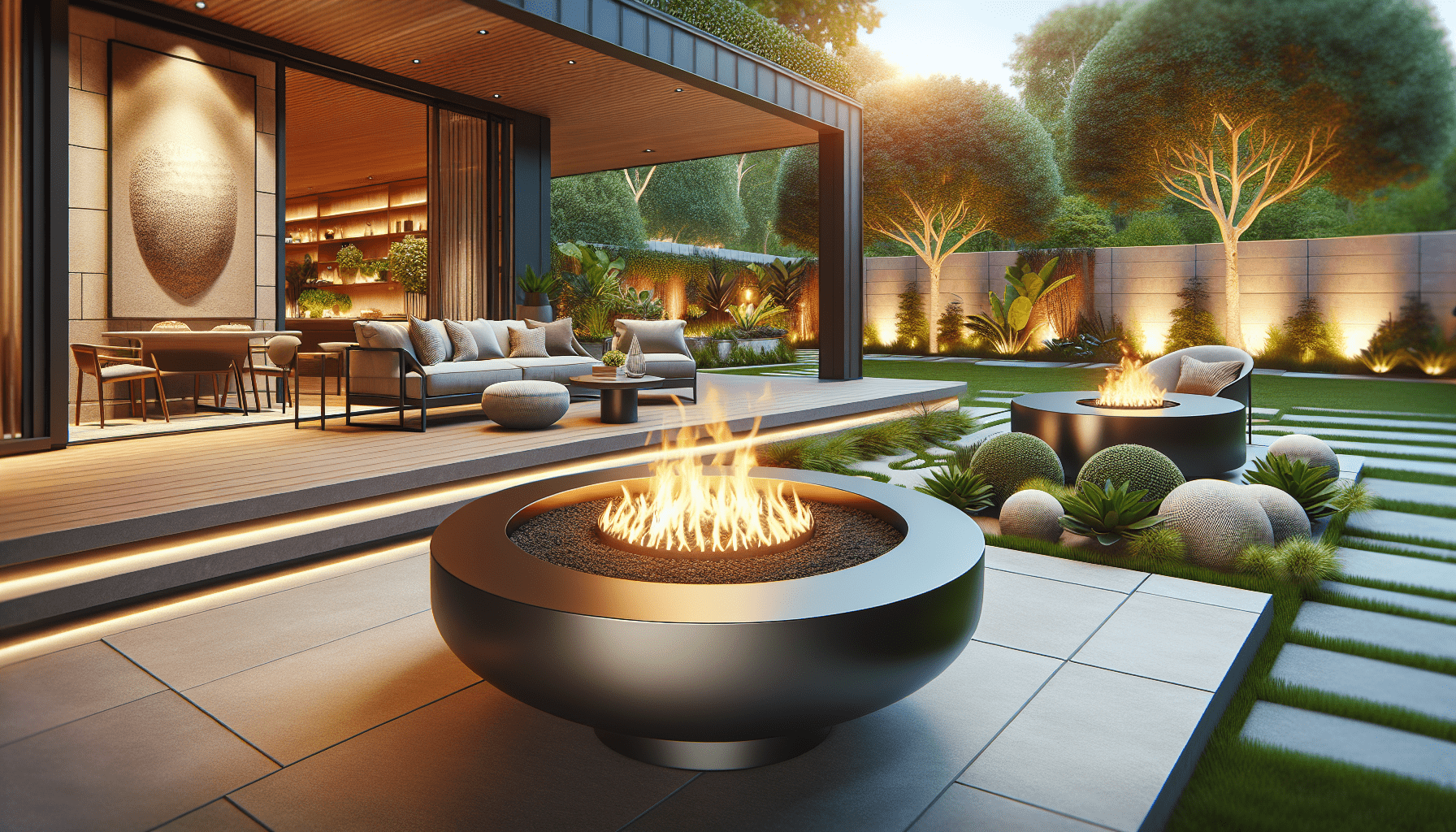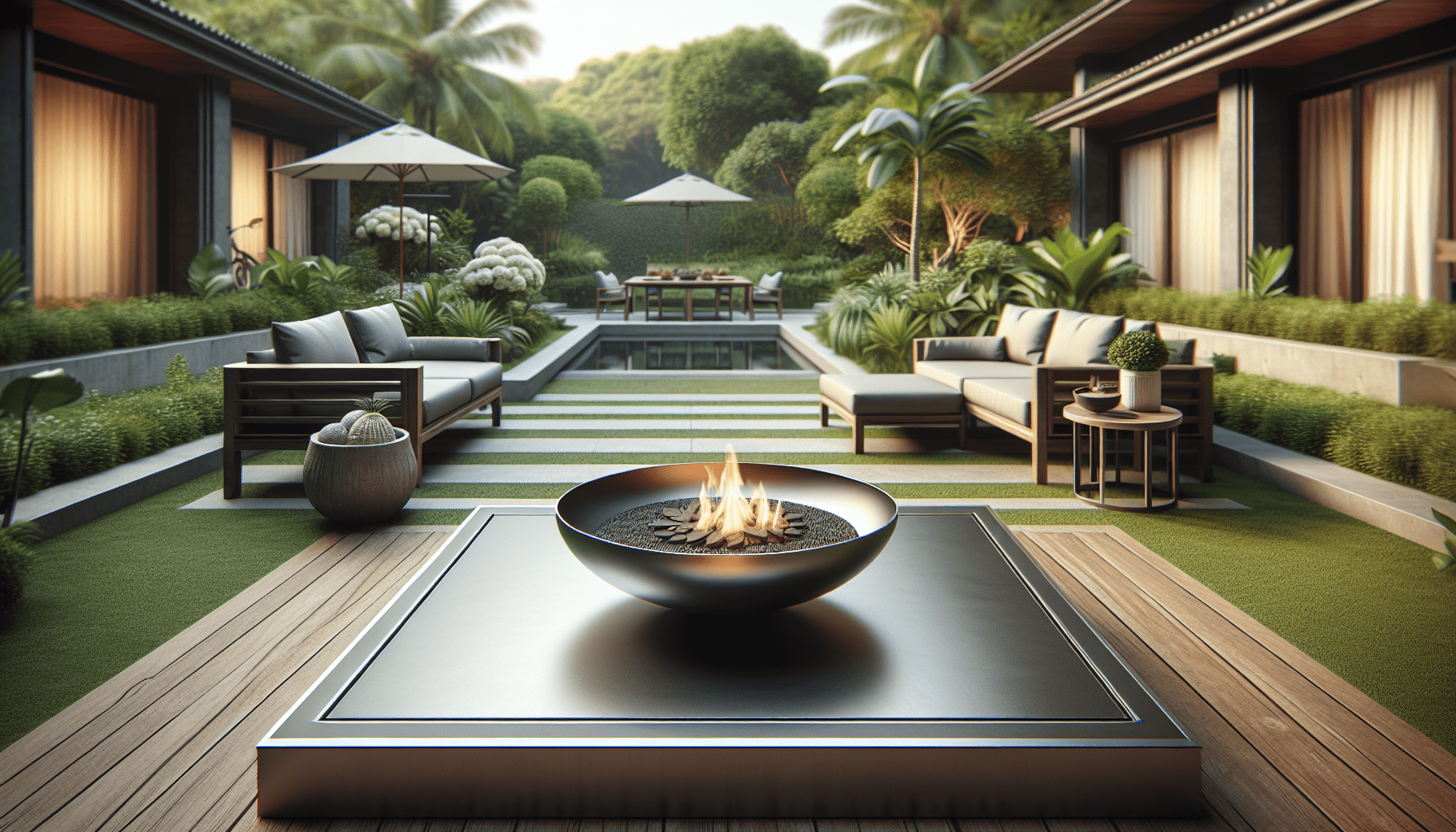Are you trying to enhance your outdoor space with a cozy, inviting fire pit? Whether it’s for a summer evening chat, roasting marshmallows, or just enjoying the mesmerizing flames, a fire pit can be the perfect centerpiece for your garden or patio. But when it comes to choosing the right fire pit pan, the options can feel overwhelming. Let’s break it down into manageable pieces, making it easier for you to make an informed decision.

What is a Fire Pit Pan?
First things first, let’s clarify what a fire pit pan is. A fire pit pan, also known as a burner pan, is the metal container where the fire elements (logs, lava rocks, fire glass) are placed. It’s an essential component in any DIY fire pit project as it helps to contain the fire element, distribute the heat evenly, and provide a safe burn.
Why Do You Need One?
The pan plays a crucial role in prolonging the life of your fire pit by protecting its interior walls from excessive heat. It also helps in maintaining heat efficiency, making those chilly evenings a lot warmer. Plus, it adds an extra layer of safety by preventing hot debris from falling out.
Different Types of Fire Pit Pans
Not all fire pit pans are created equal. The choice largely depends on the shape, size, and style of your outdoor space. Here’s a closer look at the various types:
Drop-In Pans
These are designed to be dropped into a structure, often seen in built-in fire pits. They come with or without a lip, which sits on the edge of the fire pit opening. Drop-in pans usually offer:
- Ease of installation: Just place it in the designated spot.
- Variety of shapes: Available in round, square, and rectangular forms.
Ideal for those wanting a clean, professional look without extensive construction work.
Flat Pans
Flat pans are more versatile and can be used in both above-ground and in-ground fire pits. Their primary features include:
- Flexibility: Can be placed above ground or inset.
- Multiple shapes and sizes: Making it easy to customize the look.
Perfect for individuals who want a straightforward installation but still desire a customized design.
H-Burners & Spurs
While technically burners rather than pans, H-burner and spur designs often incorporate pan-like structures. Their key elements are:
- Strategic flame distribution: Creates unique flame patterns.
- Compatibility: Often paired with fire glass.
Best suited for those who prioritize flame aesthetics and patterns over other features.
Materials You Should Consider
The type of material you choose directly impacts the durability and heat efficiency of your fire pit pan. Let’s get into some common materials:
Stainless Steel
Highly recommended for its longevity and durability, stainless steel pans offer:
- Rust resistance: Perfect for outdoor use.
- Heat durability: Can withstand high temperatures without deforming.
Ideal if you live in an area prone to rain or snow.
Aluminum
Another durable option, aluminum pans provide:
- Lightweight: Easier to handle and install.
- Heat efficiency: Good, but not as high as stainless steel.
A great option if you want a balance between cost and durability.
Copper
If aesthetics are a priority, copper pans shine with:
- Unique look: Develop a charming patina over time.
- High heat resistance: But can be more expensive.
Choose copper if you want a statement piece in your outdoor space.
Sizing Your Fire Pit Pan
Selecting the right size is pivotal to ensuring a balanced and safe setup. Here’s what you need to consider:
Measure Your Fire Pit Opening
The first step is to measure the inside diameter of your fire pit opening. The pan should ideally be 2-4 inches smaller than the opening to allow for proper airflow.
Consider the Depth
Think about how deep you want your pan to be. Deeper pans can hold more fire glass or lava rocks, prolonging the life of your burn.
Here’s a quick reference table to give you an idea of common sizes:
| Fire Pit Opening (inches) | Recommended Pan Size (inches) |
|---|---|
| 20 | 16 |
| 24 | 20 |
| 30 | 26 |

Ventilation: A Crucial Factor
Proper ventilation is critical for a safe and efficient fire pit. Without it, you could face issues like low flames or even dangerous gas buildup. Some key tips for ensuring good ventilation include:
- Ventilation Ports: Make sure your fire pit has appropriately sized ventilation ports.
- Installation Gaps: Ensure there are small gaps around the pan to allow air to flow freely.
Fuel Source Compatibility
Your choice of a fire pit pan may also depend on the type of fuel you plan to use. Here are the main types:
Natural Gas
- Convenient: Offers constant fuel supply.
- Cleaner burn: Produces fewer emissions.
Propane
- Portable: Ideal for moves and redesigns.
- Higher BTU: Often delivers more intense flames.
Wood Burning
- Traditional: Offers a classic fire experience.
- Cheaper: Often a more economical option.
Make sure the pan you choose is compatible with your preferred fuel type to avoid any mishaps.
Aesthetics and Design Considerations
Beyond functionality, the look and feel of your fire pit setup matter. Think about these aspects:
Shape and Style
- Round Pans: Best for a classic, communal look.
- Square and Rectangular Pans: Offer a modern, streamlined appearance.
Finish
- Polished Steel: Offers a sleek, contemporary look.
- Patina Copper: Adds a rustic, antique touch.
Additional Features
Some fire pit pans come with extra features such as:
- Spark Guards: Extra safety for windy days.
- Drain Holes: Useful in rainy climates to avoid water accumulation.
Installation Tips
You’ve picked your ideal fire pit pan. What’s next? Installing it correctly can be a straightforward process. Here are some steps:
Basic Installation Steps for Drop-In Pans
- Prepare the Base: Ensure it’s level and sturdy.
- Place the Pan: Drop it into the designated spot.
- Secure: Follow manufacturer instructions for securing the pan.
- Add Fire Elements: Place your choice of fire glass, lava rocks, or logs.
Gas Line Installation
If your fire pit is gas-powered:
- Consult Professionals: For safety, it’s best to have a professional install the gas line.
- Check Connections: Ensure all connections are tight and secure.
- Test Run: Conduct a test run to check for any leaks or irregularities.
Maintenance Tips
Your job isn’t finished once you’ve installed the fire pit pan. Regular maintenance will ensure it remains in top condition. Some general tips include:
Regular Cleaning
- Remove Debris: Regularly remove ash, fire glass, or stones.
- Wipe Down: Use a suitable cleaner for the material to avoid rust and tarnish.
Seasonal Inspection
- Check for Damage: Inspect for any cracks, rust, or weakening of material.
- Ventilation Check: Ensure ventilation ports are unobstructed.
Store Properly
If you live in an area prone to harsh weather, consider:
- Covering: Use a weatherproof cover when not in use.
- Disassembling: If possible, disassemble and store parts indoors during off-seasons.
Safety Precautions
Safety should always be a priority when dealing with open flames. Here are some key safety tips:
Never Leave Unattended
Always monitor the fire to avoid unexpected flare-ups or accidents.
Keep Flammable Materials Away
Ensure there’s a safe distance between the fire pit and any flammable materials like furniture, umbrellas, or trees.
Use Safety Screens
Opt for spark screens or covers to prevent embers from escaping and causing potential fires.
Install Carbon Monoxide Alarms
If using gas, installing carbon monoxide alarms around your outdoor space is a good safety measure.
Troubleshooting Common Issues
If you run into problems, don’t panic. Most common issues can be solved with some straightforward troubleshooting.
Low Flames
- Check Gas Supply: Ensure the gas line is fully open.
- Inspect Ventilation: Poor airflow can diminish flame height.
Uneven Flames
- Clean Burners: Residue buildup can cause uneven burning.
- Adjust Fuel Source: Make sure the gas supply is steady and uninterrupted.
Excessive Smoke
- Use Dry Wood: For wood-burning pits, always use thoroughly dry wood.
- Check for Obstructions: Ensure there’s nothing blocking the ventilation ports or burners.
Final Thoughts
Choosing the right fire pit pan involves considering multiple factors, from the type of material and shape to fuel compatibility and safety features. By taking the time to evaluate your needs and preferences, you can create a cozy and stylish outdoor sanctuary for friends and family to enjoy.
Ultimately, a well-chosen fire pit pan not only enhances your outdoor space but also ensures the safety and longevity of your fire pit experience. Happy outdoor gathering!

